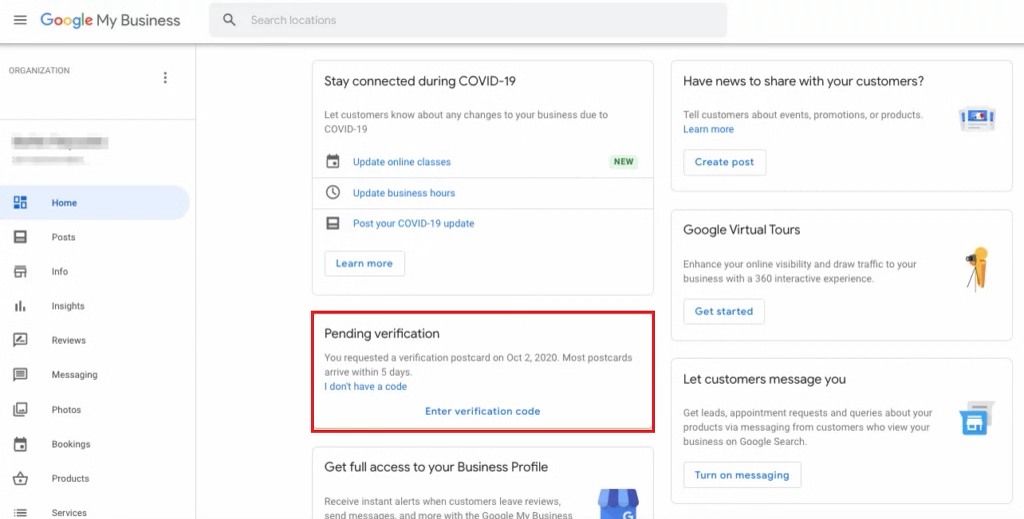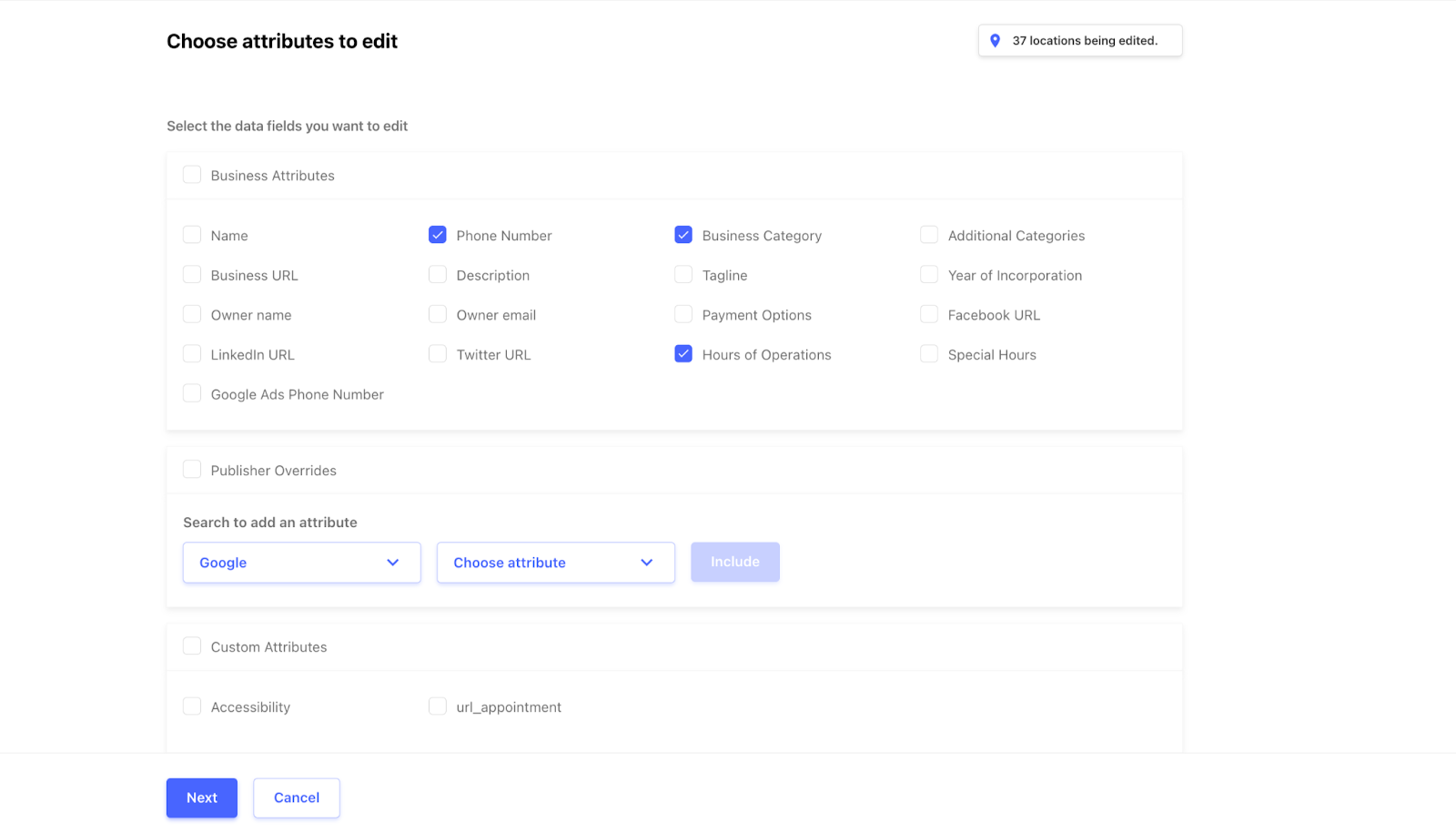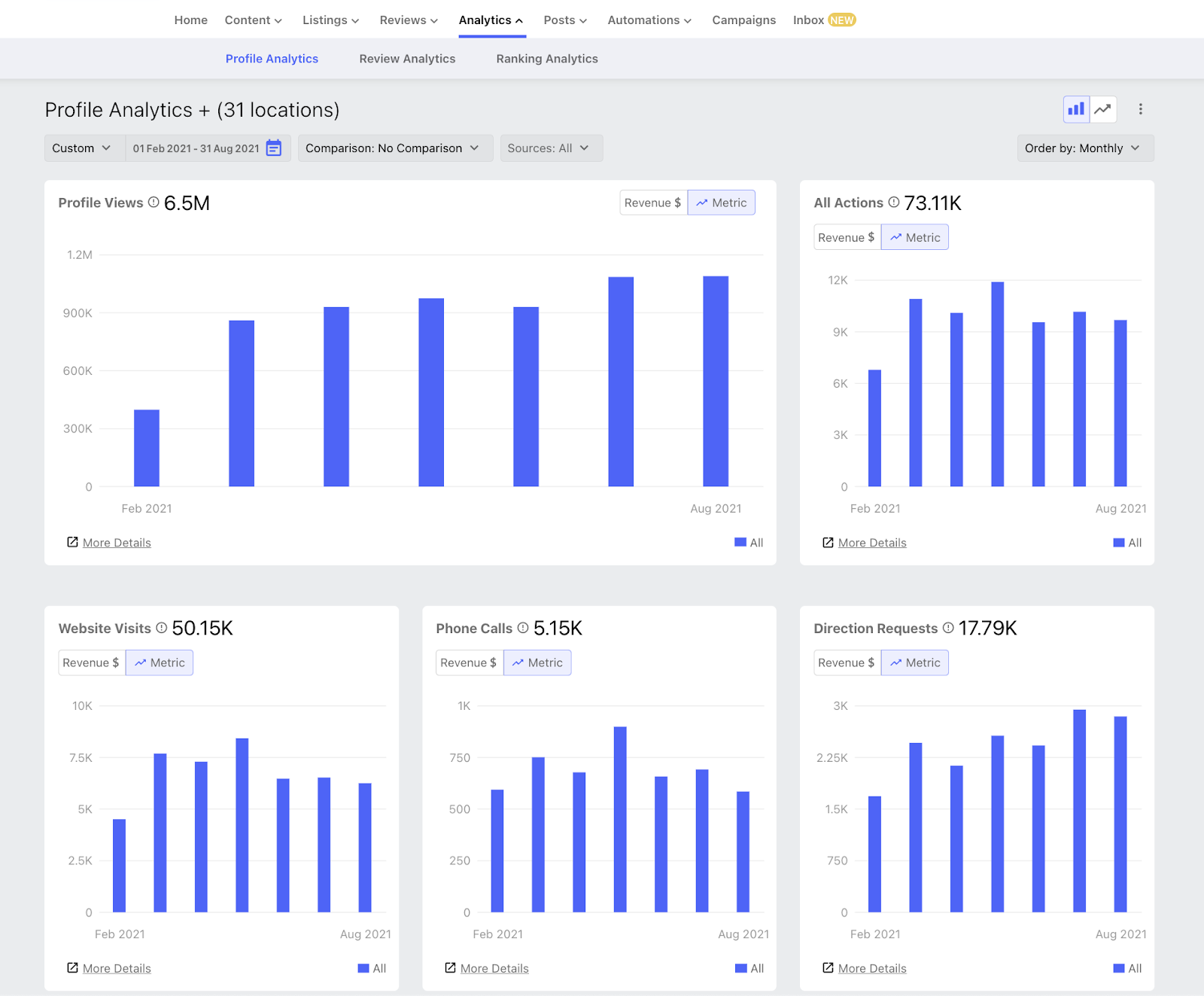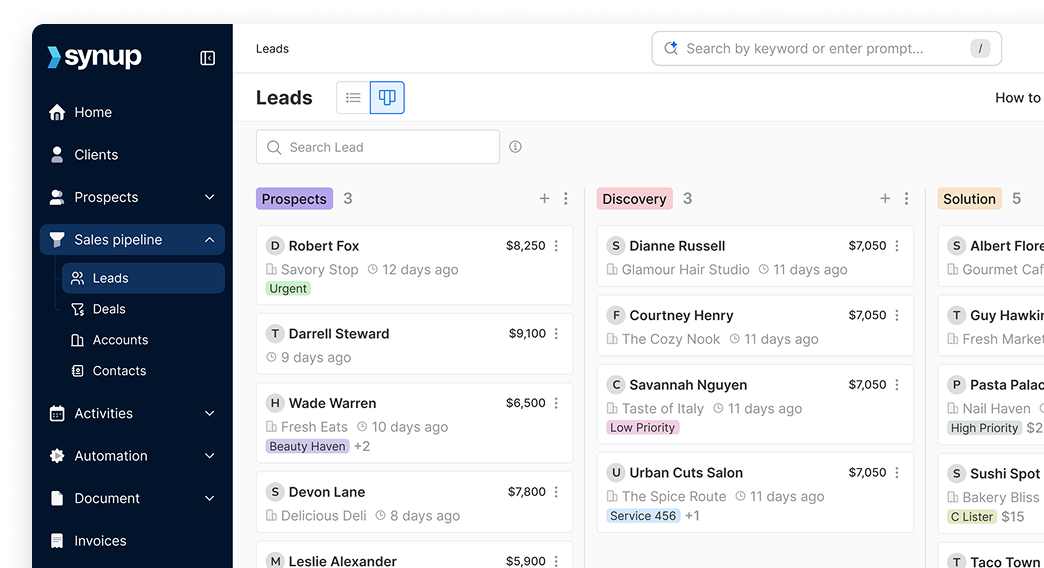Bewährte Methoden für die Pflege Ihrer lokalen Angebote
Generating leads from local searches goes beyond creating business listings. Updating your local listings is vital. Here are nine best practices for success.

Maintaining local listings has been key to SEO, lead generation and sales since the 2000s. But at some point – particularly during the late 2010s – listing management started to evolve due to saturation and the advent of listing services like Yelp, TripAdvisor, and Google My Business earlier in the new millennium.
Bad practices like outdated or inconsistent information, fake reviews, keyword stuffing, and link farming resulted in many listings losing ranking and efficiency. In fact, about $10.3 billion worth of annual sales were lost due to wrong, incomplete, or missing listing information, according to Chatmeter.
At one point, there were so many businesses listed in each local directory that users could not tell them apart and had a hard time finding what they were looking for.
This has forced several local business directories to rethink their strategy and define a new way of attracting companies that needed improved visibility and reach more potential clients. They realized that it was not enough to focus on brands that provide answers for searches in specific neighborhoods, communities, or cities.
Local directories found a new purpose by prioritizing businesses with consistent and regularly updated information. Businesses found that keeping their local listing management in line with these requirements worked to reach prospective customers around them while maintaining customer trust during times of need. Before discussing the best practices for local listing management, it's important to understand what local listings are and why they matter.
What Are Local Listings and Why They Matter
Local business listings are found on platforms like Google My Business, Yelp, Bing Places for Business, Yellow Pages, Trip Advisors and more.
These listings help customers find you when they’re searching for services or products “near me” or in [city name].
Imagine someone new to your town, craving pizza or a local delicacy and looking for a place to crash for a slice of it.
They pull out their phone and search, "Pizza near me." If your pizza shop is well-listed and updated on Google My Business or Yelp, guess what? You’re game! If not, you’re missing out on hungry customers and a lot of sales. And it's not just for pizza shops or hospitality businesses. Research shows that as much as 87% of consumers begin their product hunts online.
Reasons Local Business Listings Matter
The following data show consumer behavior regarding geolocation-driven web searches to demonstrate how important local business listings are.
- 46% of all searches on Google are local in nature.
- 88% of local searches from consumers lead to a call or a physical visit within the next 24 hours. The same is true for 34% of people who search from their PC or laptop.
- 81% of shoppers research online before making a purchase in a physical store.
- 80% of customers lose trust in a local business if they find incorrect listing information; 63% would stop using a local business for the same reason.
- 92% of people who perform a local search choose a business from the first page of Google results.
Local business listing doesn't end at listing your service or product online since there's a lot of competition these days. Let’s learn how to optimize them for the best results.
How to Keep Your Local Listings in Good Shape
Did you know that an outdated or inconsistent local business listing can harm your business's online reputation just as much as not having one at all? While local business listings are important, they are not the sole focus of local SEO. Effective local listing management requires a strategy, especially when potential customers are searching for products or services nearby. Here are the top nine checklist items to review weekly to generate more leads from your local business listings.
1. Ensure NAP Consistency Across All Listings
NAP stands for Name, Address, and Phone number—the three key pieces of information that tell people (and Google) who you are, where you are, and how to reach you.
Here's the thing: this info needs to be exactly the same everywhere it appears online.
For example, if your business address is "123 Main St" but is listed as "123 Main Street" on another site, Google might not recognize that it's the same location. Similarly, you shouldn't list yourself as “Burgers and Co.” on Google My Business and then as “Burgers and Company” on Yelp. This inconsistency doesn't help you, your customers, or the search engines, as it can create confusion.
Why does this matter? Imagine you're hungry and searching for a new restaurant. You find one that looks great, but when you check the contact info, you see two different addresses: "456 Oak Blvd" and "456 Oak Boulevard." This inconsistency raises doubts about the legitimacy of the business, likely leading you to choose another option. You want to avoid this situation for your own business.
Keeping your NAP consistent helps Google identify your business as trustworthy, boosting your visibility in search results. It’s like giving your customers and Google a clear, consistent roadmap to find you.
2. Claim and Verify All Your Listings
One of the simplest yet most important local listing management practices is claiming and verifying your listings.
Without doing this, you’re leaving your business open to misrepresentation or even getting lost in the sea of competition.
Now, here’s what happens when you don’t claim your local business listings.
Imagine a potential customer searching for your business online and finding an unclaimed listing with outdated details—incorrect hours, or worse, someone else managing it. This can create confusion and frustration, leading the customer straight to a competitor with everything in order.

Verifying your listing ensures that your contact information, hours, and photos are accurate and up-to-date. Claiming your listings on platforms like Google, Yelp, or Bing is straightforward, and it gives you control over your online presence. Once verified, you'll gain access to features that enhance your visibility, like responding to reviews and viewing monthly metrics. It’s like organizing your storefront so everyone knows exactly where to find you and what to expect. People trust what they can confirm!
3. Regularly Update Business Information
You've successfully claimed and verified your listings—great job! However, the work doesn’t stop there. If your business information isn't kept up to date, it can be just as damaging as not having a listing at all.
Consider the story of a small sandwich shop in downtown Chicago. The owner thought everything was in order, but one day, a customer came in after checking the hours on Addyp. Unfortunately, the listed hours were outdated. The shop had changed its closing time months earlier, but the online listing still reflected the old hours. This led to a frustrated, hungry customer arriving just after closing time, resulting in a one-star rating and a negative review about the "inaccurate hours."


This scenario is all too common. So, how often should you update your business listing? There’s no hard and fast rule, but you should update your listings immediately whenever there's a change—new hours, services, holiday closures, or a new phone number. Even if nothing changes, checking your listings every few months is a smart practice to ensure accuracy and smooth operation.
4. Optimize Your Listings with High-Quality Images and Descriptions
A picture truly is worth a thousand words, so what do the product or brand photos in your listings convey? Do your listing images and descriptions tell the complete story of what your product can do, or do they suggest a different narrative—one where the details are blurry, the lighting is poor, and the quality is subpar, leaving much to be desired?
Put yourself in your potential customer's shoes: you’re searching for a restaurant online and find one with dimly lit photos of its dishes. To what extent would you feel comfortable dining there? Now, compare that to a listing featuring bright, high-quality images that make your mouth water. It’s clear which one you’d choose.
High-quality images help customers visualize your offerings and foster greater confidence in their choices.
But don’t stop at the photos! Your descriptions need to be just as compelling. Even the best images won't make an impact if your descriptions are vague, rushed, or uninspiring.
Tell a story with your descriptions. Get specific about what makes your product unique. How does it solve a problem? What can customers expect when they walk through your doors or hit ‘add to cart’? By being intentional with your words and visuals, you’re not just listing products—you’re crafting an experience.
5. Monitor and Respond to Customer Reviews
Customer reviews are the digital word-of-mouth of today’s world, and they can make or break your business.

This local listing management practice reinforces the customers’ positive experience and encourages others to do the same.
Moreover, businesses (especially in hospitality) that start responding to reviews often see 12% more reviews and an increase in overall ratings, according to a study by HBR on TripAdvisor customer reviews.
Additionally, a 2024 Bright Local study says 88% of potential customers are more likely to use a business if they see the owner actively responding to reviews—both negative and positive.
So, get in there, monitor your reviews regularly, and make sure to respond thoughtfully.
6. Leverage Local Keywords in Your Listings
Keywords are the language of search engines in algorithm engineering. If you don't use them in your listings—or if you use inappropriate keywords—you risk being overlooked.
Local keywords in your listings and on your website inform search engines exactly where you are and whom you aim to help.
For example, if you run a yoga studio in Santa Monica, using phrases like “Santa Monica yoga classes” in your listings makes it incredibly easy for locals to find you.
Now, let’s say someone is new in town and searching for a coffee shop with a killer mocha latte. If your listing includes “best mocha latte in [Your Town]” or “top coffee shop in [Neighborhood],” you’re practically rolling out the red carpet for them.
Using local keywords isn’t just a clever tactic; it’s about positioning yourself in the right search results and ensuring your business stands out. When people are looking for something nearby, you want to be the first name on their list.
7. Use Local Posts and Updates
Local posts and updates are a fantastic way to keep your local listing lively and engaging. Imagine being able to announce your latest deals and events right where your customers are looking—how cool is that?
If your business is hosting a workshop or launching a new product, a quick post can keep your customers in the loop. It makes them feel like they’re part of your business’s journey. Additionally, if you’re running a limited-time promotion, local posts are a great way to announce it!
8. Use Local Listing Management Tools for Automation
Maintaining local listings kann sich manchmal so anfühlen, als würde man mit brennenden Fackeln jonglieren — aufregend, aber ein bisschen überwältigend. Verwenden Sie jedoch eine lokale Listungsverwaltung Das Tool kann für vielbeschäftigte Unternehmen mit begrenzten Ressourcen unglaublich hilfreich sein.
Tools wie Synup können den lokalen Brancheneintrag erheblich automatisieren und vereinfachen.
Nehmen wir an, Sie haben gerade einen neuen Standort eröffnet oder Ihre Geschäftszeiten am Wochenende verlängert. Anstatt jedes Inserat auf mehreren Plattformen — Google, Yelp, Bing, Facebook — manuell zu aktualisieren, können Sie sich darauf verlassen, dass Automatisierungstools diese Aktualisierungen für Sie erledigen. Diese stellen sicher, dass Ihre Informationen überall konsistent und aktuell bleiben, ohne dass es zu Problemen kommt.
Ohne Werkzeug für Pflege lokaler Angebote, Sie könnten Stunden damit verbringen, sich bei jeder Plattform anzumelden, nach veralteten Inhalten zu suchen und Änderungen vorzunehmen. Aber mit einem Tool wie Synup kannst du deine Daten an einem Ort aktualisieren und das Tool die Informationen in all deinen Inseraten verbreiten lassen.
Du kannst Synup kostenlos testen, indem du eine Demo buchen um zu sehen, wie es Ihre optimieren kann lokale Listungsverwaltung.
9. Verfolgen Sie die Leistung Ihrer Liste und nehmen Sie Anpassungen vor
Also, du hast deine lokale Listungsverwaltung alles eingerichtet — tolle Arbeit! Aber die Reise endet nicht dort. Damit deine Inserate stets in einem guten Zustand sind, musst du deren Leistung im Auge behalten und bei Bedarf anpassen. Es ist, als würde man einen Garten pflegen. Sie würden nicht einfach Samen pflanzen und weggehen; Sie würden regelmäßig vorbeischauen, gießen und vielleicht ein paar Unkräuter jäten.
Die Leistung Ihres Inserats zu verfolgen, ist wie den Puls Ihrer Online-Präsenz zu überprüfen. Tools wie Google My Business Insights oder die Analysen von Yelp können dir einen Einblick geben, wie Nutzer mit deinen Inseraten interagieren. Klicken sie auf deine Telefonnummer? Wie viele Personen besuchen deine Website von deinem Inserat aus? Diese Erkenntnisse zeigen dir, was funktioniert und was möglicherweise optimiert werden muss.

Wenn du einen Rückgang bei der Anzahl der Klicks auf deine Telefonnummer bemerkt hast, könnte eine kurze Überprüfung deines Inserats veraltete Kontaktdaten oder ein verwirrendes Layout ergeben. Die Aktualisierung dieser Informationen könnte den entscheidenden Unterschied ausmachen und dafür sorgen, dass diese Klicks und Kunden wieder zu dir zurückkehren.
Eine Anpassung an das, was Sie finden, bedeutet nicht, dass Sie alles ständig überarbeiten müssen. Manchmal ist es so einfach, Ihre Geschäftszeiten zu aktualisieren oder ein neues Foto hinzuzufügen, das Ihre neuesten Produkte oder Dienstleistungen besser darstellt. Es geht darum, dynamisch und responsiv zu bleiben. Ihre lokalen Angebote sind oft der erste Eindruck, den Kunden von Ihrem Unternehmen bekommen — stellen Sie sicher, dass er gut ist!
Zusammenfassen
Präzise und aktuell halten lokale Brancheneinträge ist eine gute Praxis für jedes Unternehmen.
Überprüfe und aktualisiere deine Informationen regelmäßig, um sicherzustellen, dass sie aktuell sind. Fordere alle deine Angebote an und verifiziere sie, um zu kontrollieren, was potenzielle Kunden sehen. Reagieren Sie auf Bewertungen und behalten Sie alle Veränderungen in der Branche im Auge. Zu guter Letzt ein lokale Listungsverwaltung Das Tool kann Änderungen automatisieren und so die Dinge konsistent halten.
Bewährte Methoden für die Pflege lokaler Angebote: Häufig gestellte Fragen
- Was ist Local Listing Management?
Verwaltung lokaler Angebote ist die Kunst, sicherzustellen, dass Interessenten und Kunden auf den gängigsten digitalen Karten und Verzeichnissen genaue und aktuelle Informationen über Ihr Unternehmen finden. Pflege lokaler Angebote beinhaltet die regelmäßige Aktualisierung Ihrer Unternehmensinformationen auf verschiedenen Plattformen wie Google My Business, Yelp und Bing Places for Business. Das bedeutet, dass Ihre Adresse, Telefonnummer, Öffnungszeiten und andere wichtige Details korrekt und konsistent sind.
- Wie kann ich mein Inserat attraktiver gestalten?
Hochwertige Fotos, eine überzeugende Unternehmensbeschreibung und ansprechende Updates können aus einem langweiligen Angebot einen Kundenmagneten machen. Wenn Sie beispielsweise ein Café betreiben, präsentieren Sie Ihre köstlichsten Gerichte oder werfen Sie einen Blick hinter die Kulissen Ihrer Baristas in Aktion.
- Was zeichnet ein Inserat aus?
Heben Sie sich ab, indem Sie sowohl sichtbar als auch ansprechend sind. Ein herausragendes Angebot umfasst in der Regel klare, hochauflösende Bilder, Kundenrezensionen und konsistente Updates. Ein freundlicher Umgangston in Ihren Antworten auf Bewertungen und die regelmäßige Veröffentlichung von Updates zu neuen Dienstleistungen oder Werbeaktionen können ebenfalls hilfreich sein.




